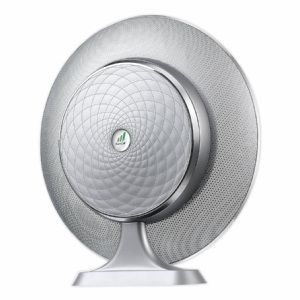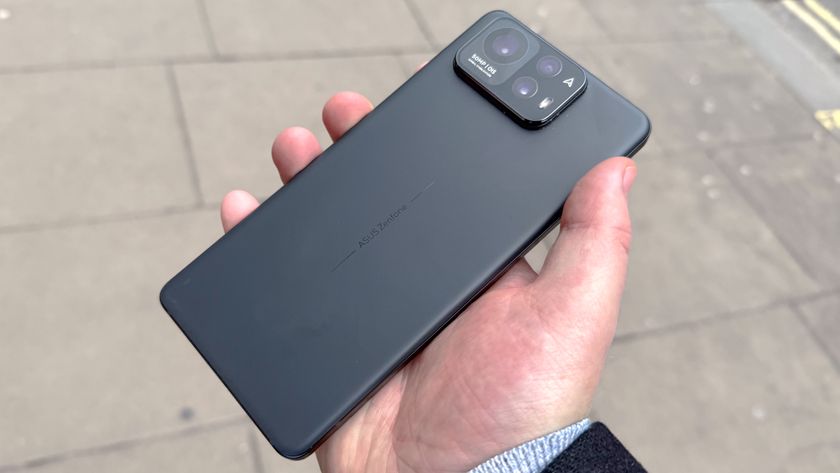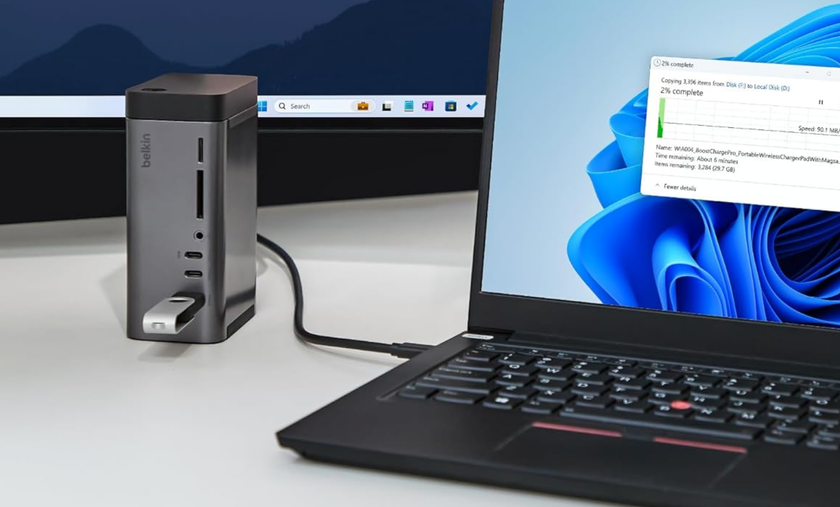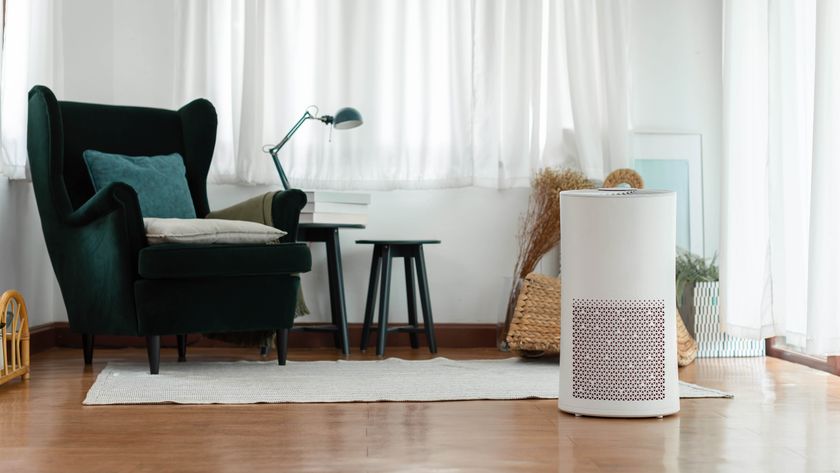Best cell phone signal boosters 2025
The best cell phone signal boosters can rescue you if you're suffering from poor reception
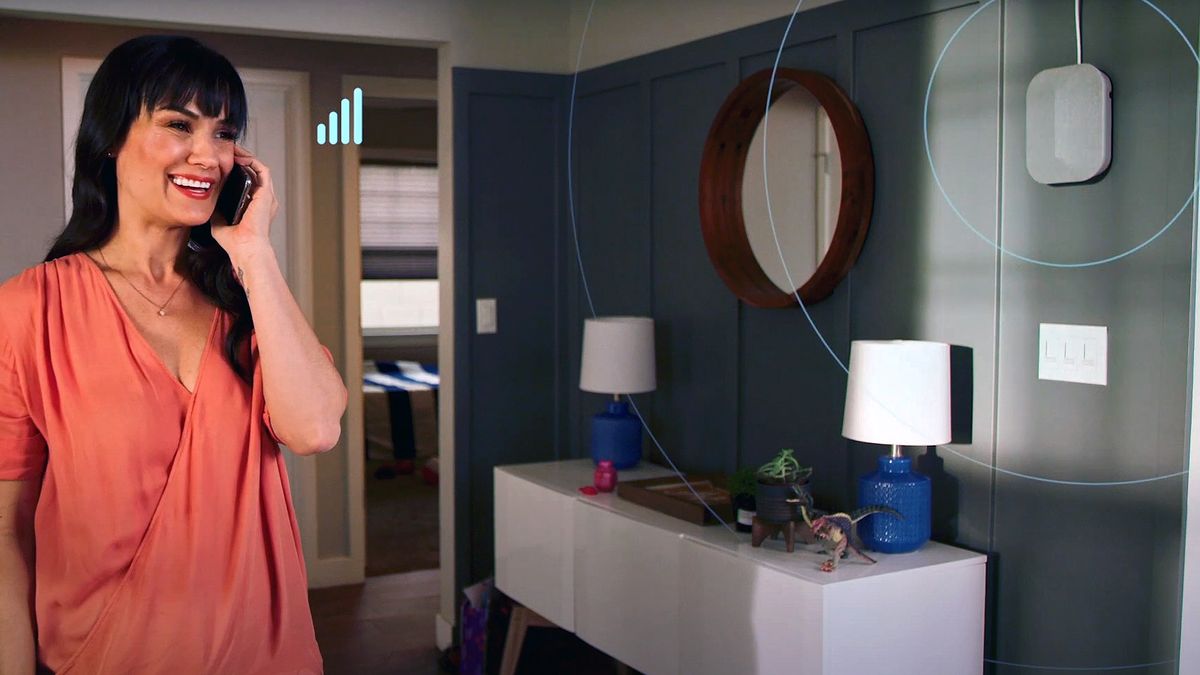
Can you hear me now? If your callers say that you're cutting in and out, it actually might not be anything that your phone can control. Rather, it could be due to a poor connection to the network. That's why the best cell phone signal boosters help boost your cell reception in your home, office, or car. The last thing you need to worry about is having inconsistencies.
If you rely on your wireless service for your home or vehicular internet, this is a must if you have spotty coverage (we know your pain) — and that's despite how many of the best phones now offer SOS emergency modes where you can send text messages and even video.
That's where signal boosters come in. They're designed to locate the nearest signal and amplify it to support all your devices. However, these devices are not quite plug-and-play solutions. It's not as simple as dropping an antenna by a window and plugging it in. And while Wi-Fi calling can be a good alternative, not all carriers and phones support it.
Most signal boosters come in three parts: an outdoor antenna, a booster to amplify the signal and an indoor antenna. There are also different kinds of boosters — directional ones, which target a specific tower belonging to a certain carrier, and omnidirectional ones, which pull in service from multiple towers belonging to multiple carriers, albeit without quite the same strength as the directional variety.
The Quick List
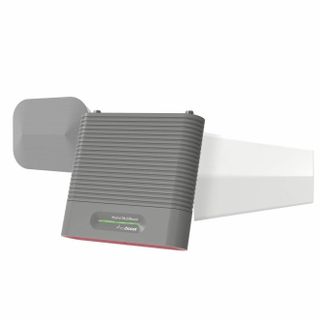
When reliability is paramount, you'll get power powerful gain and wide support for all the different cell frequencies with the WeBoost Home MultiRoom. It'll satisfy most case needs.
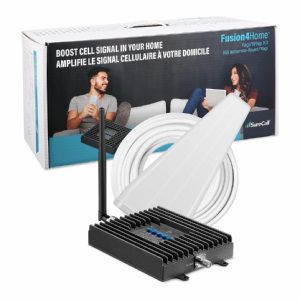
A hassle-free setup and budget cost makes the SureCall Fusion4Home cell phone signal booster easy on the pockets to gain coverage.
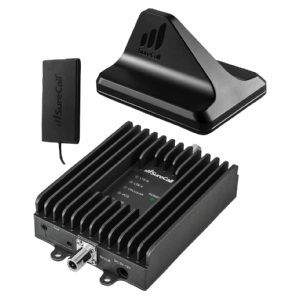
When you're constantly on the move, the SureCall Fusion2Go Max is reliable enough for proper handoff from one cell tower to another.
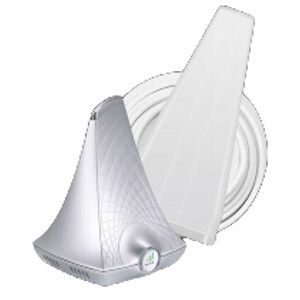
The best cell phone boosters shouldn't be eyesores. That's why the SureCall Flare 3.0 has an elegant design that's worthy of being in plain sight.
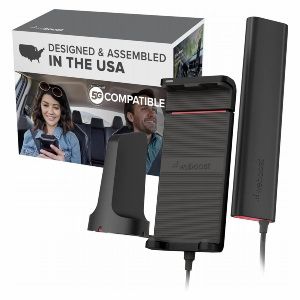
For faster speeds, the 5G support and dedicated cradle for your cell phone makes the WeBoost Drive Sleek another good option for road warriors that are constantly going.
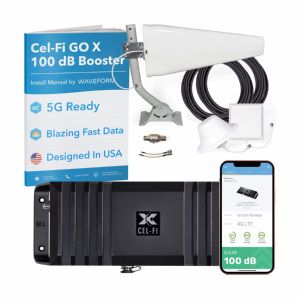
If coverage is what you're after, the Cel-fi GO X has you covered with its up to 15,000 sq ft of coverage, which makes it perfect for large home or small offices or if you're in a rural area.
Load the next 1 product...
The best cell phone signal booster you can buy
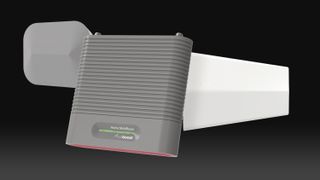
1. WeBoost Home MultiRoom
Specifications
Reasons to buy
Reasons to avoid
If you need a signal booster in the first place, you're probably not looking for a slightly better connection — you need serious improvement, and not only in one room in your home. If that's the case, the WeBoost Home MultiRoom is a good fit.
WeBoost's directional antenna design may make it a little more challenging to setup than a booster of the omnidirectional variety, but the tradeoff is an efficient, powerful signal with up to 65 dB in gain.
Like all WeBoost's offerings, the Home MultiRoom package is designed to pull in bands from all networks — Verizon, T-Mobile, AT&T and even US Cellular — on any carrier, whether you're subscribed to one of those aforementioned providers or a virtual operator like Metro or StraightTalk that piggybacks off one of the major carrier's towers.
That's great news if you see yourself changing carriers, or expect to get many years of use from the Home MultiRoom — which you probably are, because, at $550, it's far from the cheapest option.
Best budget
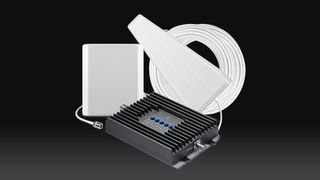
2. SureCall Fusion4Home
Specifications
Reasons to buy
Reasons to avoid
SureCall's Fusion4Home omnidirectional offering doesn't need to be focused at one tower in particular to improve your connection at home. It also works with all networks across all bands, so it's really as hassle-free as signal boosters go. The catch is, that because this is an omnidirectional antenna, it likely won't improve things quite as much as a directional one would. Therefore, if you get few to zero bars at home, this probably isn't the booster for you.
On the flip side, if you just need a little extra signal, the Fusion4Home could be helpful.
Best for the car
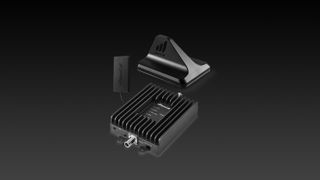
3. SureCall Fusion2Go Max
Specifications
Reasons to buy
Reasons to avoid
If you find your signal is weaker than you'd like while driving, SureCall's Fusion2Go Max is the cell phone signal booster for you. This multi-carrier solution offers up to 50 dB gain and can blanket a vehicle of any size with increased service, which is sure to come in handy on those long road trips.
SureCall's Extended Range Technology is designed to mitigate signal loss by boosting the signal twice: once at the antenna, and then again inside the vehicle, to ensure service is as strong as possible. At $499, the Fusion2Go Max is surely an expensive add-on for your vehicle, though depending on where you live or perhaps your line of work, it could be extremely handy.
Best design
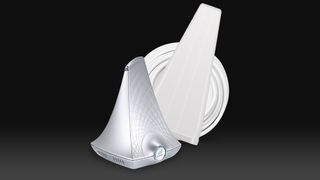
4. SureCall Flare 3.0
Specifications
Reasons to buy
Reasons to avoid
Just because you need a signal booster doesn't mean you want a mess of ugly wires and boxes running through your home. To that end, the Flare 3.0 is a more elegant option from SureCall that you'd be less embarrassed to have out and visible to the world. It's not exactly a work of art, though it is compact enough to place on an end table, thanks to its small footprint.
It also boasts a few advantages over SureCall's other offerings. Because it sports a directional antenna, it delivers a bigger bump to signal strength, especially if you're on the edge of a network. Its 3,500 sq ft of coverage makes it a good fit for apartments and small homes. Plus, at well under $400, it's not even particularly expensive for a directional option with this kind of range.
Another for the car
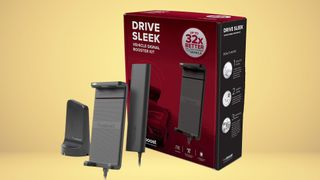
5. WeBoost Drive Sleek
Specifications
Reasons to buy
Reasons to avoid
If you want to boost just one phone's cell reception in the car, then WeBoost's Drive Sleek is a great bet. It's an inexpensive, easy-to-use option that doubles as a phone cradle/charger. It also has 5G support for most of the major carriers. That said, it's good for one device only, making it ideal for the navigation/music streaming phone on your road trip.
Like many other boosters, the Drive Sleek also lacks support for Band 41 and 71. But this one is aimed at people who need to eke out the most from their nearby cell towers while on the road. This can be extremely helpful in rural or mountainous areas where cell signal is typically much weaker.
Best for small offices
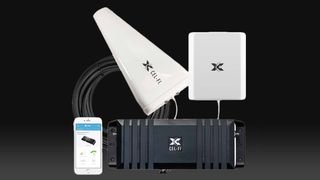
6. Cel-fi GO X
Specifications
Reasons to buy
Reasons to avoid
The Cel-Fi GO X is one of the most powerful signal boosters on this list. It packs a whopping 100 dB max, equaling serious gains in cell phone reception in your home or office. It can also cover up to approximately 15,000 square feet (with optimal conditions), making it perfect for big homes or small offices. It's also the best cell phone signal booster for rural areas.
How the GO X achieves its 100 dB power is by focusing on a single carrier. You choose which one you need for your home or office, but you can switch them on the fly if you change carriers. You can also add additional antennae for extra coverage.
The GO X also comes with protection against shock damage. It's not a cheap option by any means, pushing the $1,000 mark. But if you need maximum power, this is it.
Best for apartments
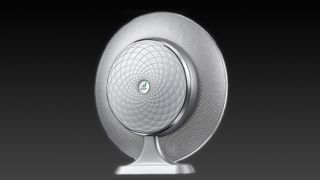
7. SureCall EZ 4G
Specifications
Reasons to buy
Reasons to avoid
For those stuck in an apartment or other rental, the SureCall EZ 4G is probably your best bet. It doesn't require an external antenna installation, instead mounting to one of your windows.
Because of this, you shouldn't expect the same performance as some of the other entries on this list, but SureCall says you can expect up to 72 dB and coverage up to 2,000 square feet. If you just need a little boost in your rental home, this might be the option for you.
The EZ 4G is also quite affordable as far as cell phone signal boosters go, hovering at about $300 or so. Considering its low overhead when it comes to installation, you can easily move it between homes or small offices.
Who needs a cell phone signal booster?
Why you can trust Tom's Guide
Several years ago, if you had bad signal in your home, you were out of luck unless you sprung for a signal booster. Nowadays, though, most phones and carriers support Wi-Fi calling. This uses your home network to handle calls and texts (and obviously data). Granted, there are some exceptions, but most of the best phones work on the major carriers' Wi-Fi calling networks.
There are also several VOIP services you could use at home, like Google Voice, which lets you accept and receive phone calls through your computer. Some of them, like TextNow, offer a free unlimited talk and text plan if you're on the road and not connected to Wi-Fi. Furthermore, if you're simply in a remote location and can't acquire a cell connection, some phones are now employing emergency SOS satellite connections that let you text message emergency services.
So those who need a dedicated cell phone signal booster might find themselves in the minority, but you already know if you need one or not.
How to choose the best cell phone signal booster for you
Before you even start shopping for signal boosters, take stock of the network you use for cell phone service, and the bands your phone operates on. While all of the products in this list work on all networks across every carrier, some lack that universal support, and you definitely don't want to end up with a signal booster that boosts the wrong signal. Also keep in mind you will have to register whatever you buy with your carrier — both because it won't work otherwise, and because it's a legal requirement.
Then, it's important to assess what exactly you need from a signal booster. If you find yourself always struggling to connect at all, prioritize finding an option that utilizes a directional antenna, as these are more focused and can deliver stronger, more efficient and consistent connections. If your situation is less dire, an omnidirectional option should do fine.
Of course, you also have to consider the space you need to fill. Unsurprisingly, signal boosters that can blanket a whole home in signal will cost more — potentially hundreds of dollars more — than those that are designed to outfit smaller spaces with service.
It also must be said that a vast number of signal boosters on the market today aren't built to improve 5G service; if you see a booster listed as "5G phone compatible," it likely means it will enhance LTE signals that a phone capable of 5G can receive, not actually that it's enhancing 5G data specifically. You'll have to wait a little while if you want something geared for next-generation networks.
Finally, if you are committed to your cellular provider of choice and don't plan to switch in the foreseeable future, why not entertain one of your network's first-party extenders or signal boosters? Verizon, T-Mobile, and AT&T all offer products designed for exactly that purpose, and because they're uniquely attuned into your particular network's infrastructure, they might work even better than some of the options on this list.
How we picked the best cell phone signal boosters
We at Tom's Guide are not currently equipped to test the best cell phone signal boosters ourselves in a lab testing. So we relied on third-party tests and manufacturer specifications to create this list. We hope to be able to go hands-on with signal boosters in the future.
Sign up to get the BEST of Tom's Guide direct to your inbox.
Get instant access to breaking news, the hottest reviews, great deals and helpful tips.

John’s a senior editor covering phones for Tom’s Guide. He’s no stranger in this area having covered mobile phones and gadgets since 2008 when he started his career. On top of his editor duties, he’s a seasoned videographer being in front and behind the camera producing YouTube videos. Previously, he held editor roles with PhoneArena, Android Authority, Digital Trends, and SPY. Outside of tech, he enjoys producing mini documentaries and fun social clips for small businesses, enjoying the beach life at the Jersey Shore, and recently becoming a first time homeowner.
- Jordan PalmerPhones Editor
- Adam Ismail
-
Bryce Shinn Great roundup on cell phone boosters but you're biased towards Weboost and Surecall. Give your readers more options with other brands with equal uplink and downlink power that are cheaper. For example, see this SolidRF kit with two interior antennas (not Weboost nor Surecall offers that) at only $389: https://www.signalbooster.com/products/solidrf-dual-inside-antennas-cell-phone-signal-booster-signal-plusReply -
Shalmaneser Reply
I agree. I'm also looking for information on LTE and signal strength. Is there a minimum for full bandwidth, or is it proportional up to 0dB? Seems like a simple question, but answers are shrouded.sinak said:This list is incomplete without the Cel-Fi GO X. It's the only booster that gets you 100 dB gain, which means way better performance in most places.
